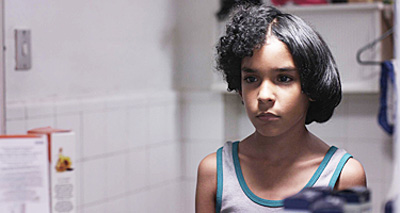Seven films from the 2014-2015 international festival season, including appearances by two of the film’s directors, highlight Lawrence University’s fourth Latin American and Spanish Film Festival that begins Wednesday, April 8.

Each film, shown in Spanish with English subtitles in the Warch Campus Center cinema, is free and open to the public.
A pair of free receptions at 7 p.m. — April 8 to open the festival and April 11 to close it — also will be held in the Warch Campus Center.
“We’re back for our fourth year with some of the most critically-acclaimed films of the recent international season, including several regional premieres,” said Rosa Tapia, associate professor of Spanish and organizer of the festival. “The public also will have an opportunity to meet two award-winning international filmmakers who will join us to discuss their films.
“As one audience member told me last year, ‘Having this festival in town is like living in New York City for a week,’” added Tapia. “The festival had developed a big regional draw, with people coming from throughout the area and even as far away as Madison and Milwaukee.”
The festival schedule includes:
- Wednesday, April 8, 8 p.m., “Bad Hair (Pelo Malo)” (Venezuela, 2013)
Award-winning director Mariana Rondón uses the panic surrounding a nine-year-old boy’s obsession with straightening his hair to explore issues of racism and homophobia in Latin America.
- Thursday, April 9, 5 p.m., “Dust on the Tongue (Tierra en la Lengua)” (Colombia, 2014)
An elderly man takes a trip with his grandchildren in an attempt to persuade them to kill him so he won’t die of old age. Following the film, director Ruben Mendoza will discuss the film and participate in an audience Q & A.
- Thursday, April 9, 8 p.m., “Two Shots Fired (Dos Disparos)” (Argentina, 2014)
This absurdist comedy follows 17-year-old Mariano, who finds a gun in his home and – in a moment of impulse – shoots himself twice, but miraculously survives.
- Friday, April 10, 5 p.m., “To Kill a Man (Matar a un Hombre)” (Chile, 2014)
A downtrodden working class man takes matters into his own hands when the local government refuses to help quell a nearby gang of criminals.
- Friday, April 10, 8 p.m., “Cantinflas” (Mexico, 2014)
A biopic of Mexican comedy star Mario Fortino Alfonso Moreno Reyes, better known as “Cantinflas,” whom Charlie Chaplin once called the greatest comedian alive.
Director Moises Sepulveda will be on hand to discuss his film “The Illiterate” following its screening on April 11.
- Saturday, April 11, 5 p.m., “The Illiterate (Las Analfabetas)” (Chile, 2014)
Based on a recent Chilean play, “The Illiterate” follows Ximena, a middle-aged woman struggling to learn how to read. Following the film, director Moises Sepulveda will discuss the film and participate in an audience Q & A.
- Saturday, April 11, 8:30 p.m., “Living is Easy with Eyes Closed” (Spain, 2013)
An English teacher picks up two hitchhikers on his trip through Spain to meet John Lennon.
The festival is sponsored by the Lawrence academic programs Film Studies, Foreign Language Coalition, Latin American Studies, Gender Studies, the student organizations VIVA, All Is One and GLOW and the Center of Latin American and Caribbean Studies at UW-Milwaukee.
About Lawrence University
Founded in 1847, Lawrence University uniquely integrates a college of liberal arts and sciences with a nationally recognized conservatory of music, both devoted exclusively to undergraduate education. It was selected for inclusion in the Fiske Guide to Colleges 2015 and the book “Colleges That Change Lives: 40 Schools That Will Change the Way You Think About College.” Engaged learning, the development of multiple interests and community outreach are central to the Lawrence experience. Lawrence draws its 1,500 students from nearly every state and more than 50 countries.